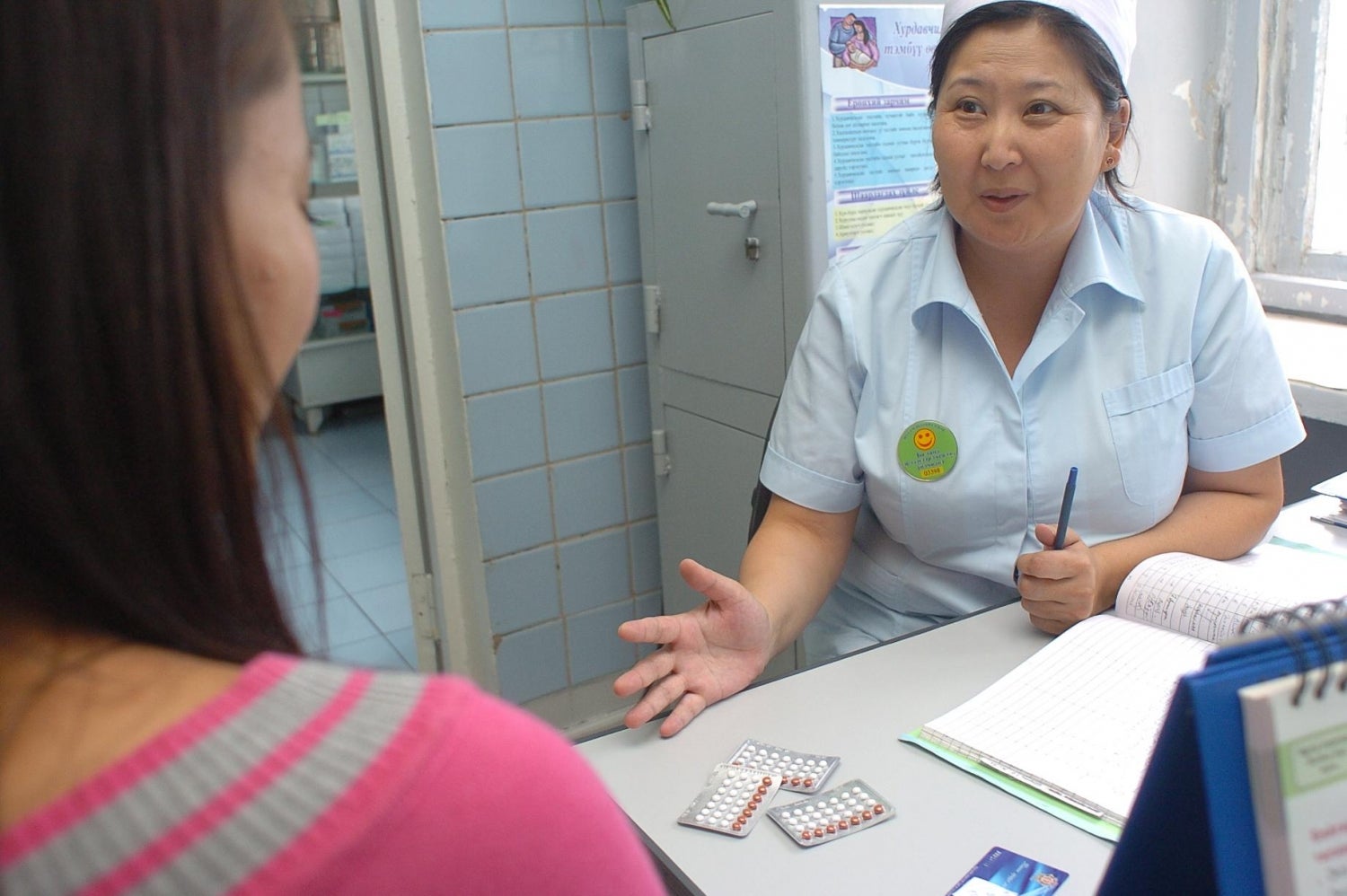History
Following Mongolia’s shift from a centrally planned economy subsidized by the Soviet Union to a free-market system in the 1990s, government health expenditure declined, and the supply of essential medicines and medical supplies suffered.1 Combined with access barriers due to harsh climate, remote geography, and poor population-wide knowledge and awareness, these cuts affected the operations of health care coverage and the quality of health services.23 The centralized health system that Mongolia inherited relied on the state for both the financing and delivery of care mainly through hospital-based curative care.345 The system was weak on primary care, with a large and inefficient hospital network largely inaccessible by its large, remote population and an underdeveloped human resource sector.3 Mongolia shifted its health system to operate within a supply and demand market economy that allowed for the entrance of private providers of healthcare services.12 Through a series of policies and initiatives, this system has evolved into a public-private partnership supported by a network of rural and urban health centers and hospitals.2
How geographic access was integrated into health system reform
The Health Sector Development Program (1997) (HSDP) funded by the Asian Development Bank (ADB) supported various reforms designed to improve primary health care (PHC) in both rural and urban areas through the development of a network of PHC facilities.1 PHC facilities are empaneled into designated catchment areas based on politically established administrative units throughout Mongolia.26 Public-funded PHC is delivered to catchment populations by family health centers (FHCs), privately run state-owned organizations that provide basic PHC in urban areas, and soum health centers (SHCs) - government-owned and operated health services that provide PHC to populations in rural and remote areas.23 Soum health centers hire bagh feldshers, trained mid-level community-based personnel that provide care to nomadic herdsmen families and communities.7 In 2011, Mongolia launched a new incentive remuneration system to address worker retention and staff shortages in rural areas. PHC staff employed for five consecutive years in rural health facilities receive monetary incentives equivalent to six month salaries.2 Additionally, the Ministry of Health (MoH) instituted a policy requiring new medical graduates to spend their first two years practicing in a PHC facility to further address medical personnel shortages.2 In 2015, the “Mobile Health Services in Mongolia Project” was started to provide better access to care and diagnostics to remote populations through mobile health units.8
How financial access was integrated into health system reform
The HSDP implemented a series of policies and financial reforms designed to promote equitable resource allocation, financial sustainability, and universal access to PHC.1 The Social Health Insurance System established in 1996 helped provide insurance coverage for registered citizens and mobilize health funding, reaching 82.5% population coverage in 2010.247 In 2006, PHC facilities transitioned from a partial Health Insurance Fund and State budget system to a full State budget tax-based funding system.2 Primary health centers are intended to play a gatekeeping role, in which primary care providers regulate and authorize patient access to specialty and hospital care and diagnostic services.34 Full-funding in the PHC sector and efforts to develop gatekeeping and referral systems have helped to regulate user fees and reform excessive utilization of hospital-based care.2
Additionally, the government has worked to help support low-income and vulnerable populations by subsidizing their health insurance contributions and costs of essential medicines.7 In efforts to expand PHC access and cater to the growing rural-urban migration, the 2011 Health Act made FHCs fully government funded based on a risk-adjusted capitation payment method.4 The transition to full-funding of FHCs has helped enable uninsured and unregistered poor people who migrated from rural to urban areas to access basic health services.4
Outcomes & impact
Mongolia’s series of policies and financial reforms have enabled it to achieve universal PHC. These PHC gains have played an important role in improving Mongolia’s health indicators including a life expectancy of 69.82 (2015), and a drop in its infant mortality rate (IMR) and maternal mortality rate (MMR) to achieve its maternal and child health targets for the Millennium Development Goals.24
PHC utilization has increased dramatically among Mongolia’s poor population, with a rate of attendance at SHCs and FHCs two-times that of the wealthiest quintile.2 FHCs are readily accessible in urban areas and strides have been made to develop functional referral networks in rural areas through rural facility mapping and rehabilitation of referral centers and hospitals.1

